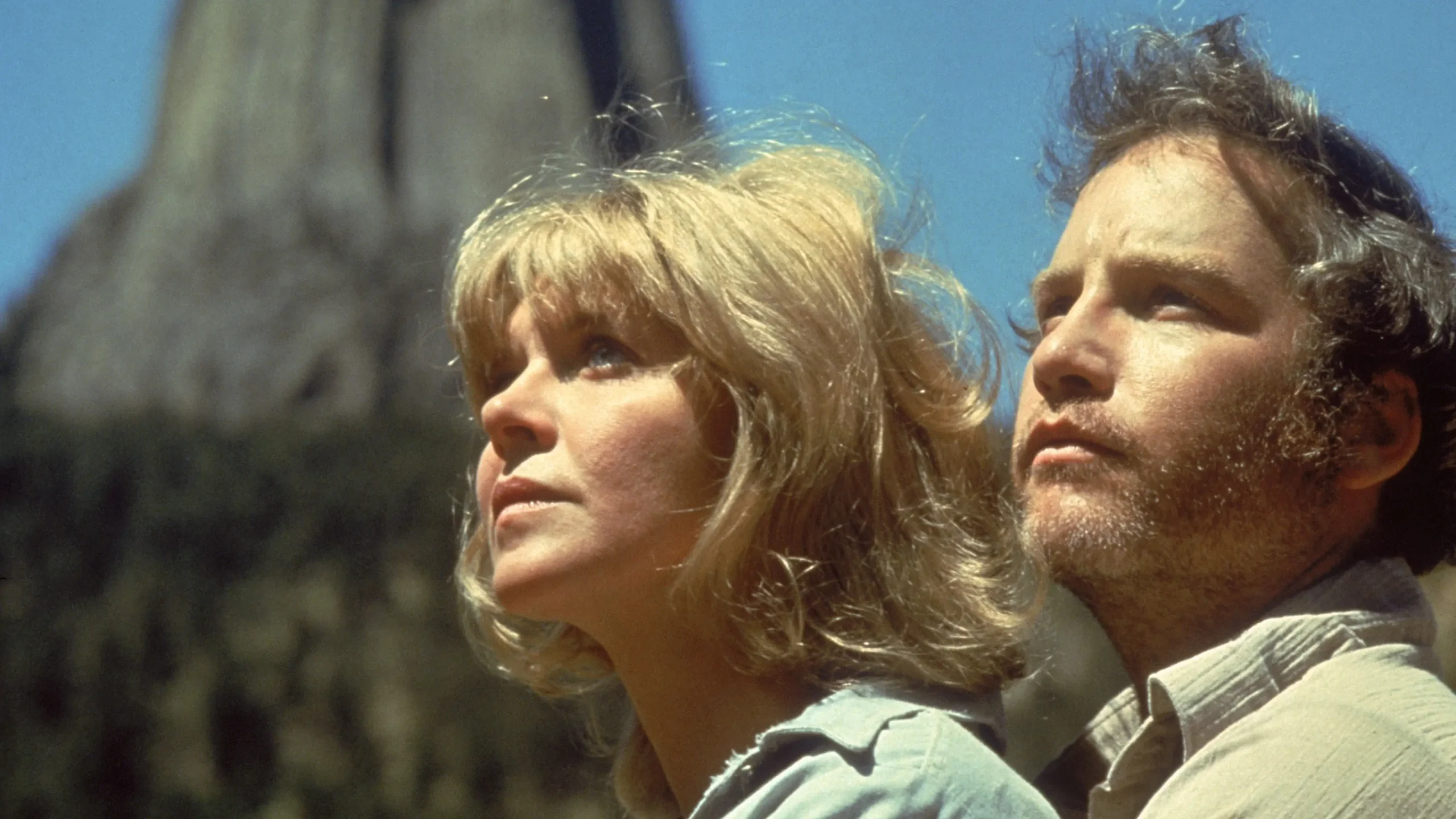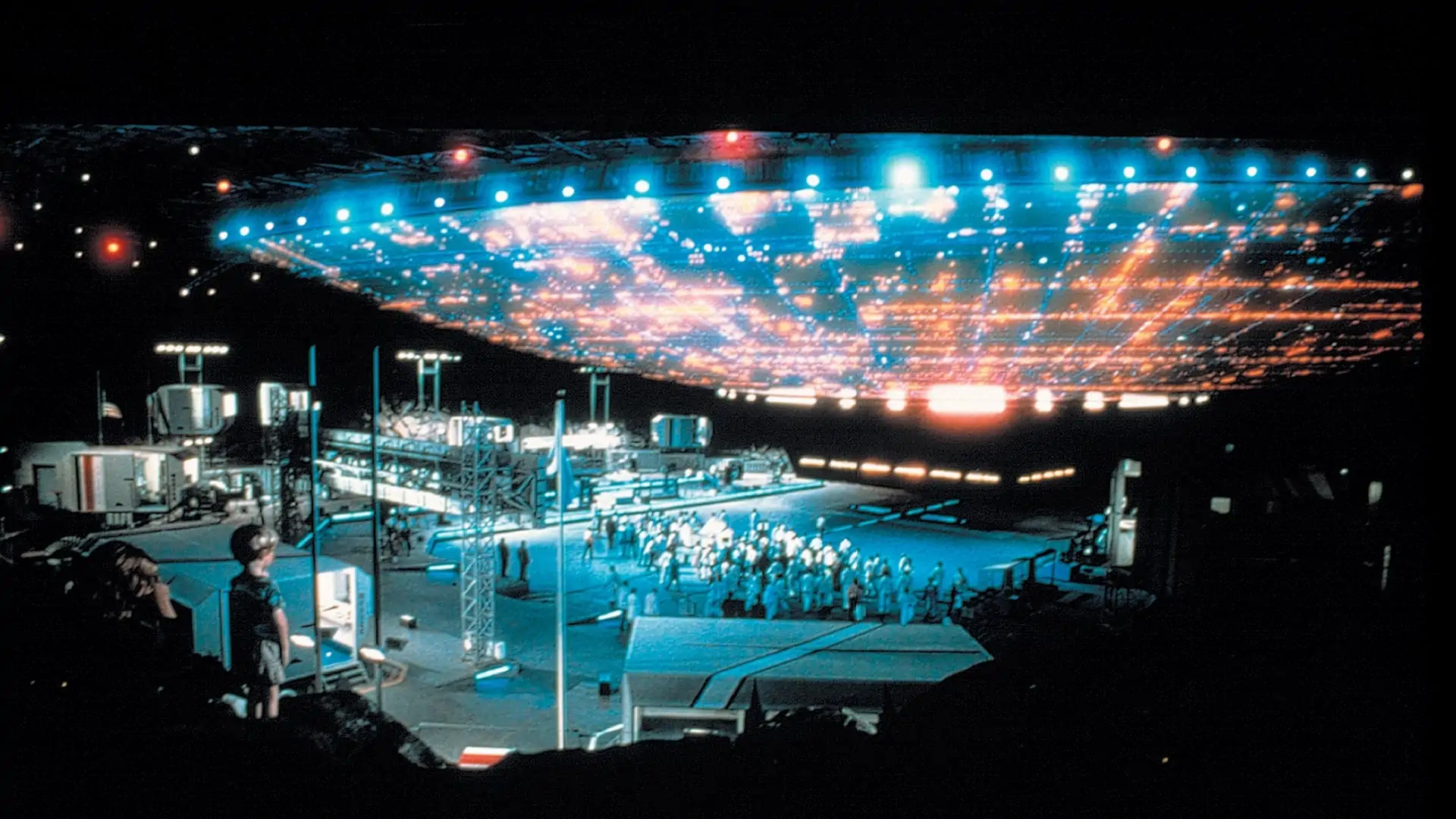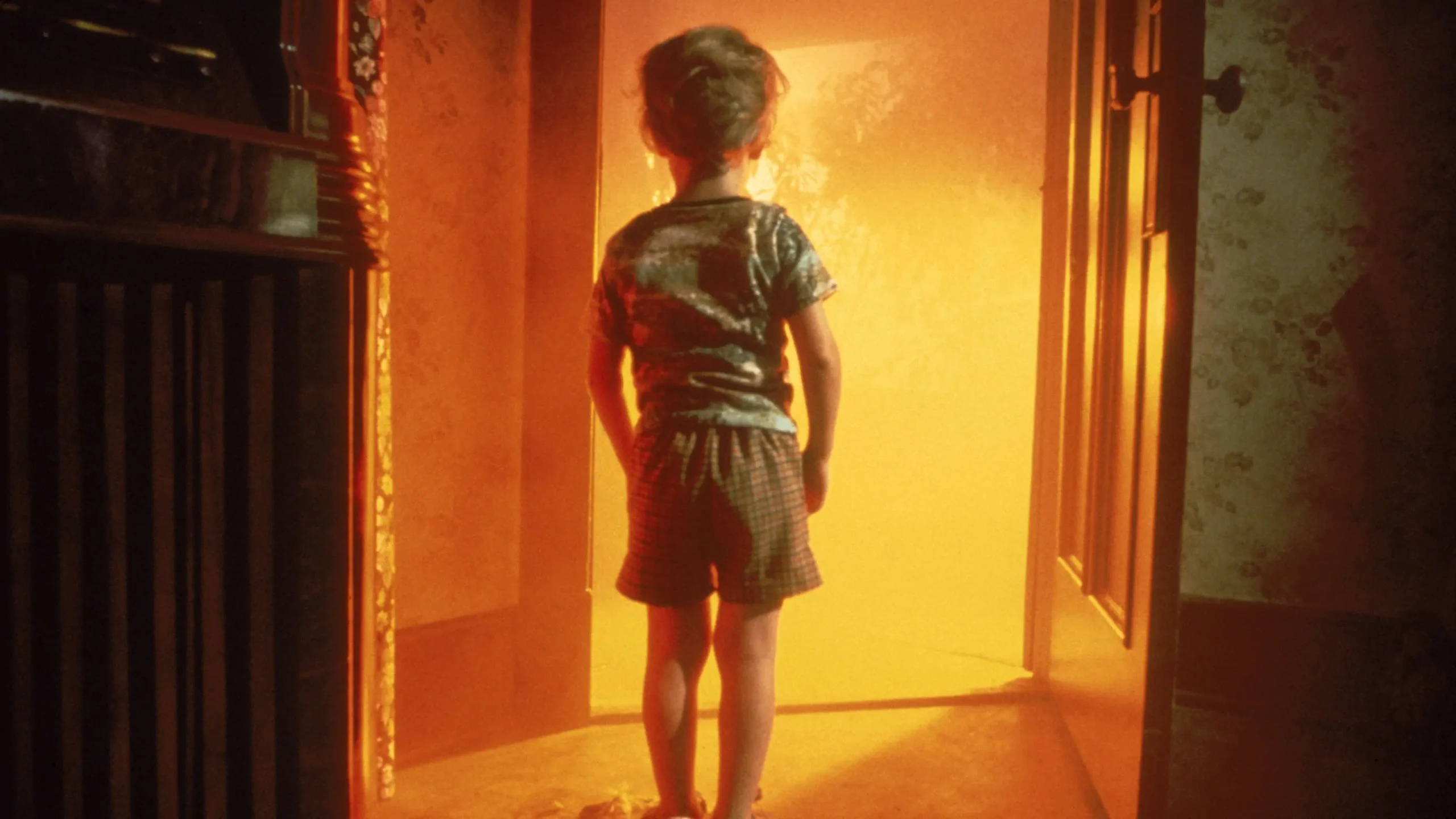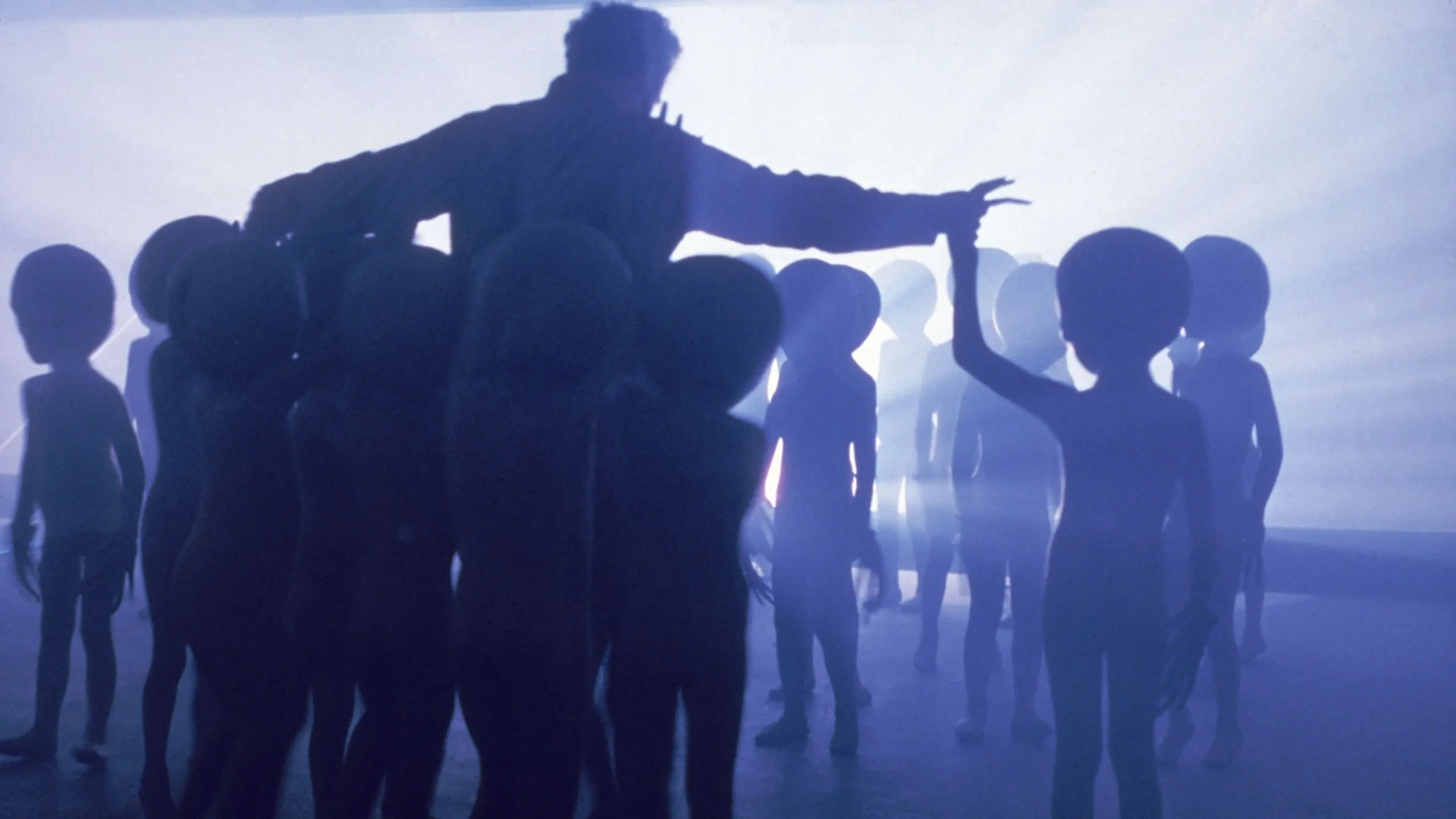Lights flicker, alarms blare, and strange patterns fill the night sky. The world is captivated by an otherworldly phenomenon in “Close Encounters of the Third Kind.” Released in 1977 and directed by the legendary Steven Spielberg, this science fiction masterpiece took audiences on a mesmerizing journey into the realm of extraterrestrial encounters. With Richard Dreyfuss at its helm, this film remains a timeless classic that continues to capture imaginations even four decades later.
Join us as we explore the impact and legacy of “Close Encounters,” delving into Spielberg’s visionary direction, analyzing its key themes and symbolism, marveling at its groundbreaking special effects, and uncovering how it became a beloved gem among critics and viewers alike. So buckle up for close encounters with brilliance!
A brief summary of Close Encounters of the Third Kind
In “Close Encounters of the Third Kind,” we find ourselves immersed in a world where the line between reality and the unknown is blurred. The story follows Roy Neary (played by Richard Dreyfuss), an ordinary man whose life takes a drastic turn when he encounters a UFO one night. This encounter leaves him with an unexplainable obsession, driving him to seek answers and unravel the mysteries that lie beyond our understanding.
As Roy becomes increasingly consumed by his fixation, his relationships begin to crumble. His wife and children struggle to comprehend his newfound passion, while skeptics dismiss him as delusional. But Roy’s determination leads him on a thrilling journey to Devil’s Tower, Wyoming – the site where humans will make contact with extraterrestrial beings.

Spielberg masterfully crafts suspense throughout the film, keeping viewers on edge as they eagerly anticipate each new revelation. With stunning visuals and a gripping storyline, “Close Encounters” serves as both an exploration of humanity’s fascination with outer space and an examination of personal transformation in the face of inexplicable phenomena.
This iconic film not only solidified Spielberg’s status as a visionary director but also became a touchstone for science fiction movies to come. Its impact on pop culture remains undeniable even after all these years since its release. So strap yourself in for one unforgettable ride into uncharted territories!
The impact and legacy of the film on science fiction genre
The impact and legacy of Close Encounters of the Third Kind on the science fiction genre cannot be overstated. Directed by Steven Spielberg, this 1977 masterpiece revolutionized the way we perceive extraterrestrial life and paved the way for future sci-fi films.
One of the most significant contributions of Close Encounters is its portrayal of aliens as beings with their own emotions, motivations, and desires. Rather than depicting them as solely malevolent or mysterious creatures, Spielberg humanizes these extraterrestrials, allowing audiences to empathize with them. This approach challenged traditional notions of good versus evil in science fiction storytelling.

Furthermore, Close Encounters introduced a level of realism rarely seen before in sci-fi movies. The film combined state-of-the-art special effects with a compelling narrative that captivated viewers from start to finish. Spielberg’s attention to detail created a believable world where encounters with aliens seemed plausible.
The movie also explored profound themes such as communication and understanding between different species. It emphasized the idea that peaceful coexistence is possible if humans open their minds and hearts to other forms of intelligence beyond our own.
Close Encounters set a new standard for visual effects in cinema. From the awe-inspiring spaceship designs to breathtaking scenes showcasing contact between humans and aliens, every frame was crafted meticulously to immerse audiences in an otherworldly experience.

Critics acclaimed Close Encounters for its groundbreaking blend of drama and spectacle, while audiences flocked to theaters worldwide, drawn by its innovative storytelling techniques. The film became an instant classic that continues to inspire filmmakers today.
In conclusion (since it is impossible not conclude), Close Encounters remains a timeless masterpiece that has left an indelible mark on both science fiction cinema and popular culture at large. Its enduring legacy can be seen in subsequent films exploring similar themes or paying homage to Spielberg’s visionary work. Richard Dreyfuss’s exceptional performance combined with Spielberg’s creative genius make this movie an essential watch for any fan of the genre.
The director, Steven Spielberg’s, vision for the film
Steven Spielberg, the visionary director behind Close Encounters of the Third Kind, is no stranger to creating captivating and emotionally charged films. With this sci-fi masterpiece, Spielberg set out to create a story that would not only entertain audiences but also make them question their place in the universe.
Spielberg’s vision for Close Encounters was twofold: he wanted to explore humanity’s fascination with extraterrestrial life while also delving into the personal journey of one man. Richard Dreyfuss brilliantly portrays Roy Neary, an ordinary blue-collar worker whose encounter with a UFO sets him on a transformative path.

One key aspect of Spielberg’s vision was his commitment to realism. He wanted every scene, from Roy’s initial sighting to the awe-inspiring climax at Devil’s Tower, to feel authentic and believable. To achieve this, he meticulously researched real-life UFO sightings and consulted with experts in the field.
Another important element of Spielberg’s vision was his use of symbolism and metaphor throughout the film. The recurring image of light serves as both a literal representation of alien spacecraft and a metaphorical symbol for enlightenment and discovery. This adds depth and layers to the narrative, inviting viewers to interpret the film on multiple levels.
Furthermore, Spielberg utilized groundbreaking special effects techniques that were ahead of their time in 1977. From practical models and puppetry to innovative camera tricks like forced perspective shots, he pushed boundaries in order to bring his otherworldly vision to life on screen.

In terms of storytelling technique, Spielberg employed suspenseful pacing that kept audiences on edge throughout the film. He expertly balanced moments of quiet introspection with thrilling sequences filled with tension and wonderment.
All these elements combined resulted in an unforgettable cinematic experience that left audiences spellbound when it first premiered over four decades ago. Today, Close Encounters remains a testament not only to Steven Spielberg’s unparalleled talent as a filmmaker but also its enduring impact on science fiction cinema.
Spielberg’s vision for Close Encounters of the Third Kind was ambitious and groundbreaking, and it continues to inspire and captivate audiences today. By seamlessly blending science fiction with human drama, he created a thought-provoking and visually stunning masterpiece that remains one of the most influential films in cinematic history.
Analysis of key themes and symbolism in the movie
In Close Encounters of the Third Kind, director Steven Spielberg expertly weaves together a tapestry of themes and symbolism that elevate this sci-fi film into something truly extraordinary. One key theme explored throughout the movie is humanity’s innate curiosity and fascination with the unknown. From Roy Neary’s relentless pursuit of answers to his encounter with extraterrestrial beings, this theme is woven into every aspect of the story.
Symbolism plays a significant role in conveying deeper meanings within the film. The most prominent symbol is that of light, which represents enlightenment and transformation. Whether it be the blinding brilliance emanating from UFOs or the glowing presence that lures characters towards their destiny, light serves as a metaphor for self-discovery and growth.
Watch Close Encounters of the Third Kind (1977) Trailer
Another important theme explored in Close Encounters is communication, both interstellar and interpersonal. The mysterious musical tones emitted by aliens become a language through which they communicate their intentions to humanity. This highlights Spielberg’s belief in the power of music as a universal language capable of bridging gaps between different species.
The concept of faith also emerges as an underlying theme in Close Encounters. Characters like Roy Neary are driven by an unwavering belief in something greater than themselves – an unexplained force drawing them towards an otherworldly encounter. This exploration of faith raises questions about our place in the universe and our connection to higher powers.

Spielberg utilizes these themes and symbols to create an emotional journey for viewers, immersing them completely into his vision for Close Encounters. By delving deep into these concepts, he prompts us to ponder profound existential questions while simultaneously thrilling us with awe-inspiring visuals.
With its thought-provoking themes and masterful use of symbolism, Close Encounters remains one of Spielberg’s most captivating works to date!
Production and special effects of Close Encounters
The production of Close Encounters of the Third Kind was a massive undertaking, with director Steven Spielberg sparing no expense to bring his vision to life. From elaborate set designs to groundbreaking special effects, every detail was meticulously planned and executed.
One of the most impressive aspects of the film’s production was its use of practical effects. Spielberg wanted to create an authentic experience for the audience, so he employed a combination of miniatures, models, and large-scale sets. The result is a sense of realism that still holds up today.

In addition to practical effects, Close Encounters also utilized state-of-the-art visual effects techniques. This included the use of optical compositing and matte paintings to seamlessly blend live-action footage with fantastical elements. The iconic scene featuring Richard Dreyfuss’s character being bathed in light from a UFO is a testament to the technical mastery behind the film.
Another noteworthy aspect of Close Encounters’ production is its innovative sound design. Sound editor Frank Warner worked closely with composer John Williams to create otherworldly sounds that would enhance the viewer’s immersion in this alien encounter. The eerie “five-tone” musical motif has become synonymous with extraterrestrial contact in popular culture.
It is clear that tremendous effort went into making Close Encounters visually stunning and immersive through its production and special effects. It remains an enduring example of how attention to detail can elevate a science fiction film beyond mere entertainment into something truly extraordinary.
Critic Reviews and Audience Reception
When Close Encounters of the Third Kind was released in 1977, it received mixed reviews from critics. Some praised the film for its groundbreaking special effects and emotional storytelling, while others found fault with its slow pacing and lack of character development. However, over time, the film has gained a cult following and is now regarded as one of Steven Spielberg’s greatest achievements.
Audiences were captivated by Richard Dreyfuss’ performance as Roy Neary, a regular guy who becomes obsessed with UFOs after a close encounter. Dreyfuss brought an authenticity to his role that resonated with viewers, making them empathize with his character’s journey of self-discovery.

The film’s stunning visual effects also left audiences in awe. From the iconic image of the mothership descending on Devil’s Tower to the mesmerizing light show at the end, Close Encounters pushed the boundaries of what was possible in filmmaking at the time.
But what truly sets this movie apart is its exploration of themes such as wonder, curiosity, and our place in the universe. Spielberg masterfully weaves these elements together to create a thought-provoking narrative that lingers long after the credits roll.
While some may argue that Close Encounters lacks depth or fails to deliver a clear message, it undeniably sparked conversations about extraterrestrial life and our relationship with it. It challenged conventional ideas about humanity’s significance in relation to other intelligent beings.

In conclusion (as per your request), Close Encounters of the Third Kind continues to capture imaginations decades after its release due to its visionary direction by Steven Spielberg and Richard Dreyfuss’ compelling performance. This classic sci-fi film transcends genres and leaves viewers pondering their own beliefs about our place in a vast universe full of possibilities – a testament to its enduring appeal.
Conclusion: Why Close Encounters is a timeless classic
Close Encounters of the Third Kind, directed by Steven Spielberg and starring Richard Dreyfuss, stands as a testament to its status as a timeless classic in the science fiction genre. Released in 1977, this film continues to captivate audiences with its intriguing storyline, visionary direction, and unforgettable moments.
Spielberg’s vision for Close Encounters was clear right from the start – he wanted to explore humanity’s fascination with extraterrestrial life and our innate desire to communicate with beings from beyond our world. Through his masterful storytelling skills, he weaves together themes of wonder, curiosity, and the sense of being part of something greater than ourselves.

One of the key strengths of Close Encounters lies in its ability to resonate with viewers on multiple levels. On one hand, it offers an exhilarating cinematic experience through its stunning special effects that were groundbreaking at the time. The iconic scene where UFOs descend upon Devil’s Tower leaves audiences spellbound even decades after its release.
Additionally, Spielberg infuses deeper layers into the narrative by exploring themes such as obsession and sacrifice. Richard Dreyfuss delivers a remarkable performance as Roy Neary – a man whose encounter with an unidentified flying object leads him down a path filled with unrelenting determination and personal turmoil.

The film also incorporates rich symbolism throughout. From musical tones serving as both communication signals between humans and aliens to images representing spiritual awakening and enlightenment, each element adds depth to the story. It encourages viewers not only to question our place in the universe but also contemplate larger existential questions about life itself.
Upon release, Close Encounters garnered critical acclaim for its innovative storytelling and technical achievements. Audiences were equally enthralled by this thought-provoking tale that balanced thrilling moments with emotional resonance. Today it remains widely regarded as one of Spielberg’s greatest works.













































